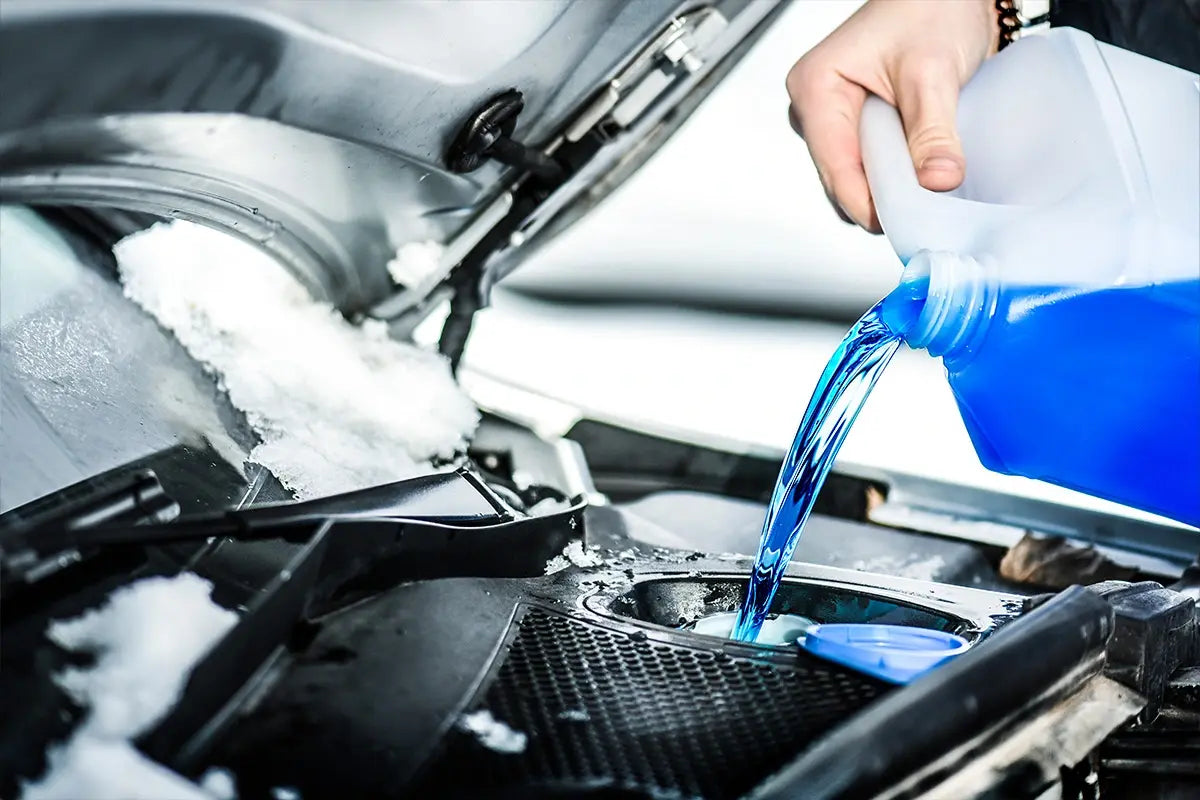
It is essential to get regular oil and filter changes to make sure your vehicle is functioning properly. While it’s important to take care of your car’s health, your wallet likely doesn’t approve of frequent trips to the body shop to get it tuned up.
Luckily, it’s possible to learn how to complete some of these fixes yourself. If you’re wondering how, we’ve got you covered. Consider this your ultimate step-by-step guide to figuring out how to complete an oil and filter change. You’ll be a pro before you know it.
Read on to learn more in this article of shine armor blog!
What is an Oil change, and Why Do Cars Need Them?
To understand why cars require oil changes, let’s first dissect why oil is necessary for cars. Without any oil in your car’s engine, the metal pieces rub together as you drive, creating friction. Oil, on the contrary, lubricates the car’s engine and even allows it to avoid overheating.
Oil is absolutely essential to run your car, so your vehicle will experience problems if you’re lacking it. In the autobody industry, it has been said that you should go for an oil change every three thousand miles or three months—whichever of these comes first. Of course, it’s okay if you wait a bit longer, but if you go much longer without an oil change, your car might experience issues.
If you’re wondering why cars need oil changes, we have an answer for that, too. While your oil moves throughout your engine, it picks up dirt and water. Consequently, it becomes less efficient.
This ultimately can deposit dirt all around your engine, which could lead to large issues. The result? An expensive engine cleaning might be due, or even several parts of your engine might quit working. Oil truly is responsible for ensuring that your vehicle runs smoothly, so the least you can do is take care of it in terms of oil changes.
During an oil change, your car has the old, dirty oil removed from its engine. This should be replaced with fresh, new oil, and your oil filter should be replaced at this time.
you can see these car detailing related products in shine armor:
- Shine Armor Vacuum Cleaner
- Shine Armor Graphene Ceramic Spray
- Spray Wax Quick Coat for Cars
- Performance Booster Oil Additive
- Armor Suds Graphene Shampoo
What Do You Need to Change Your Oil and Filter At Home?
While oil changes aren’t typically too expensive (they usually run you about $35–$75 if you use conventional oil and $65–$125 if you use synthetic oil), it’s more cost-effective to do it yourself at home. That’s why we’re here to equip you with the resource you need to tackle this project in your own driveway.
Here are the tools required:
- Wrench (This is needed to remove the drain plug.)
- Funnel
- Oil Filter Wrench
- Oil Drain Pan
- Gloves (Preferably latex.)
- Jack & Jack stands
In addition to these tools, an at-home oil change also requires these materials:
- Oil
- Oil Filter
- Replacement Drain Plug Washer
How To Change Your Oil and Oil Filter at Home
Once you’ve compiled your materials and checked your car’s engine oil to determine it’s time for a change, you’re ready to begin the process of changing your oil and oil filter! Here’s how.
1. Run your car’s engine. Warm oil drains quicker than cold oil, so you should run your car’s engine for a few minutes before completing the process. However, it is important only to run the engine for a few minutes—if the engine heats up too much, that’s going to be unsafe because it will be too warm to drain.
2. Jack up the car. This is a crucial step to get right because the results could be hazardous if you don’t. Make sure you’re correctly using the jack & jack stands to lift the car. Take some extra care with this step.
3. Find the oil drain plug and put the oil pan underneath it. If you’re unsure where the oil drain plug is, you’ll be able to find your answer in your owner’s manual. Then, loosen the plug using your wrench.
4. Unscrew the plug. While you do this, you must push the plug back towards the pan. That will ensure that the oil won’t rush out until you’re ready to unplug the hole. It’s important to be cautious on this step—the oil could be hot.
5. Drain the old oil. To find where the filler cap is located on top of the engine, you’ll have to consult the vehicle’s owner manual. Once you do that, removing it makes the draining process quicker. This is because air can then enter from the top.
6. Replace the car’s oil plug. After you’ve drained all the old oil, replace it and tighten it by hand. After the plug is tight, secure it using your wrench. Your owner’s manual should specify if you need to use a new drain plug gasket. It’s important not to overtighten this plug.
7. Remove the car’s existing oil filter. Be cautious because even after the oil has been drained, your old oil filter might still have hot oil. Place your oil pan under the old filter, and then carefully use the wrench and remove the filter. Using a rag, clean off the mounting surface located on the engine. You should also make sure the gasket from the old filter isn’t stuck to it.
8. Lubricate the new oil filter. Screw it into place using your hands. Before you install the new filter, you should lightly coat the rubber seal using some fresh oil. Then, check to ensure the seal is seated correctly in the filter and screw it on by hand. You usually don’t have to tighten the oil filter using the wrench, but you should check the specific instructions of the filter you purchased to be sure.
9. Pour in the new oil. Be sure you use a clean funnel, pour in the oil specified for your vehicle, and the correct amount (your owner manual should specify). It’s possible that some oil didn’t drain out, and you want to make sure you don’t overfill it. When you’re all done pouring in the oil, replace the cap, too.
10. Run your engine. You’re almost done with your oil and filter change! It’s time to run the engine for a few minutes. Then, you should check the area around the oil drain plug and filter. There should be no leaks; however, if there is, there’s no need to panic. Simply cut off the engine and fix it. If you don’t see any leaks, turn off the engine. Then, give it time to rest for a minute or two—this allows for the oil to drain down.
11. Check the car’s oil level. Now, remove the car’s dipstick, wipe it off, and replace it. Then, you should remove it again. It should be up to the “full mark.” If it’s not, add more oil - the balance should be shown in the car manual. Lower your car, and you’re almost all set and ready to go.
12. Get rid of the old oil and filter responsibly and correctly. It’s important to get rid of old oil and the used filter properly. This means taking them to an authorized used engine oil drop-off center or a recycling center.
13. Give yourself a pat on the back. You’ve officially completed your first oil and filter change at home.
What Happens If You Wait Too Long for an Oil Change?
If you wait too long for an oil change, there could be big problems in store for your vehicle. Not only can these issues prove inconvenient, but they can also become rather pricey.
Your engine oil breaks down and wears out as time goes on. For that reason, the oil is less effectively lubricating and absorbing heat. These are only two of the reasons that taking care of your oil change is important.
If you go too long without getting your oil changed, your clean, smooth oil simply turns into sludge. This results in your engine having to work overtime to fight through the build-up, and your car can ultimately face huge issues. Luckily, there’s an easy way to prevent that, and it’s simply getting your oil changed.
In Summary
Having the proper amount of oil is critical to ensure that your car and its engine are running properly. If you don’t have enough oil in your engine, your car is going to run into big issues, and sooner rather than later.
Of course, it can be tempting to simply drop your car off at the shop for an oil change. Sometimes it’s a quick and easy task, and your car will be ready to go in as brief as a half-hour. That being said, there’s no reason to open your wallet for an oil and filter change when you can complete the process entirely on your own at home.
You only need a few materials and tools, and changing your oil and filter at home allows you to take ownership over the maintenance of your car.
An oil change might sound trivial in the big scheme of vehicle maintenance, but it’s one of the most effective ways to take care of your car’s health.
Sources:
https://www.edmunds.com/how-to/how-to-change-your-oil-the-real-down-and-dirty.html






